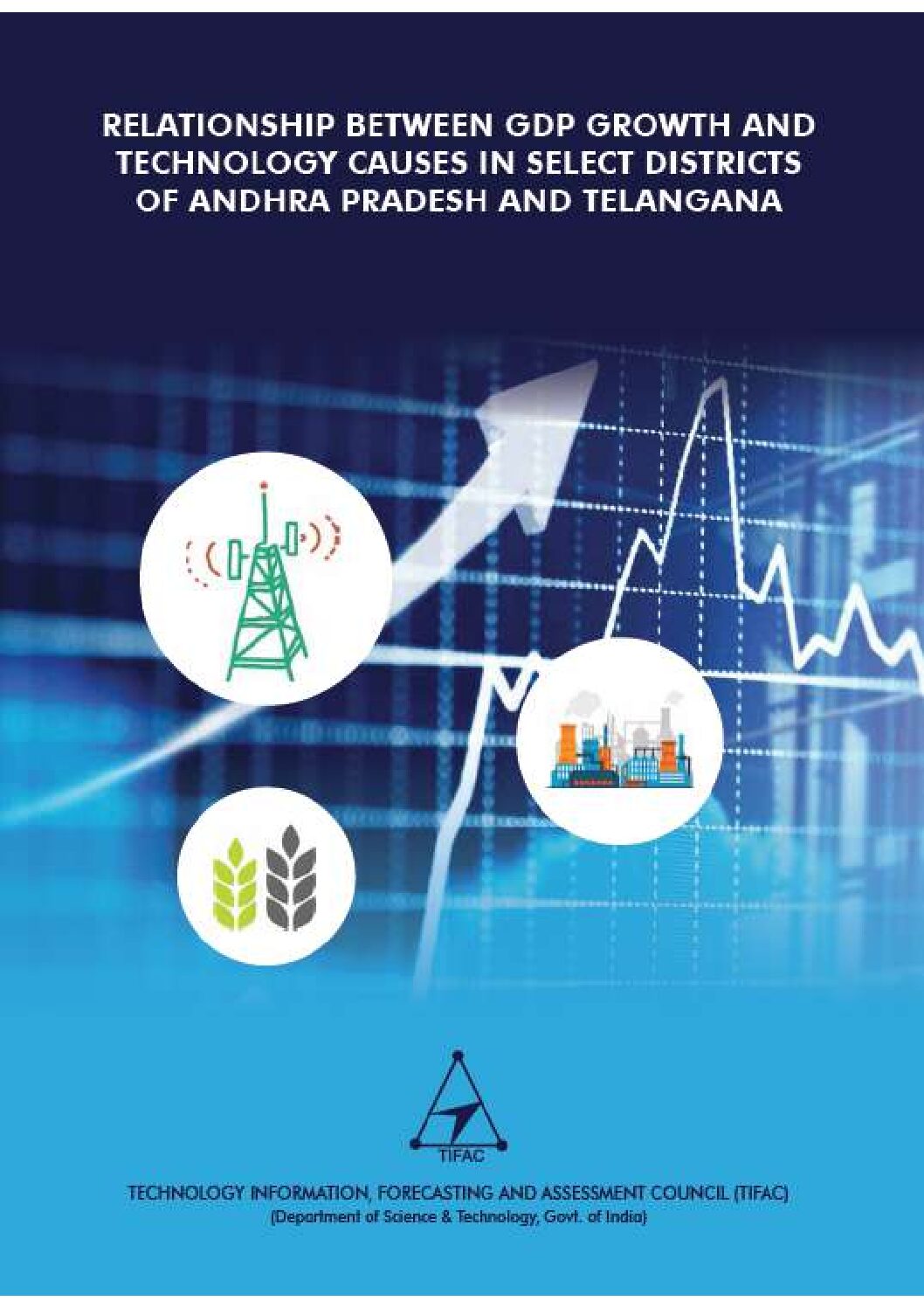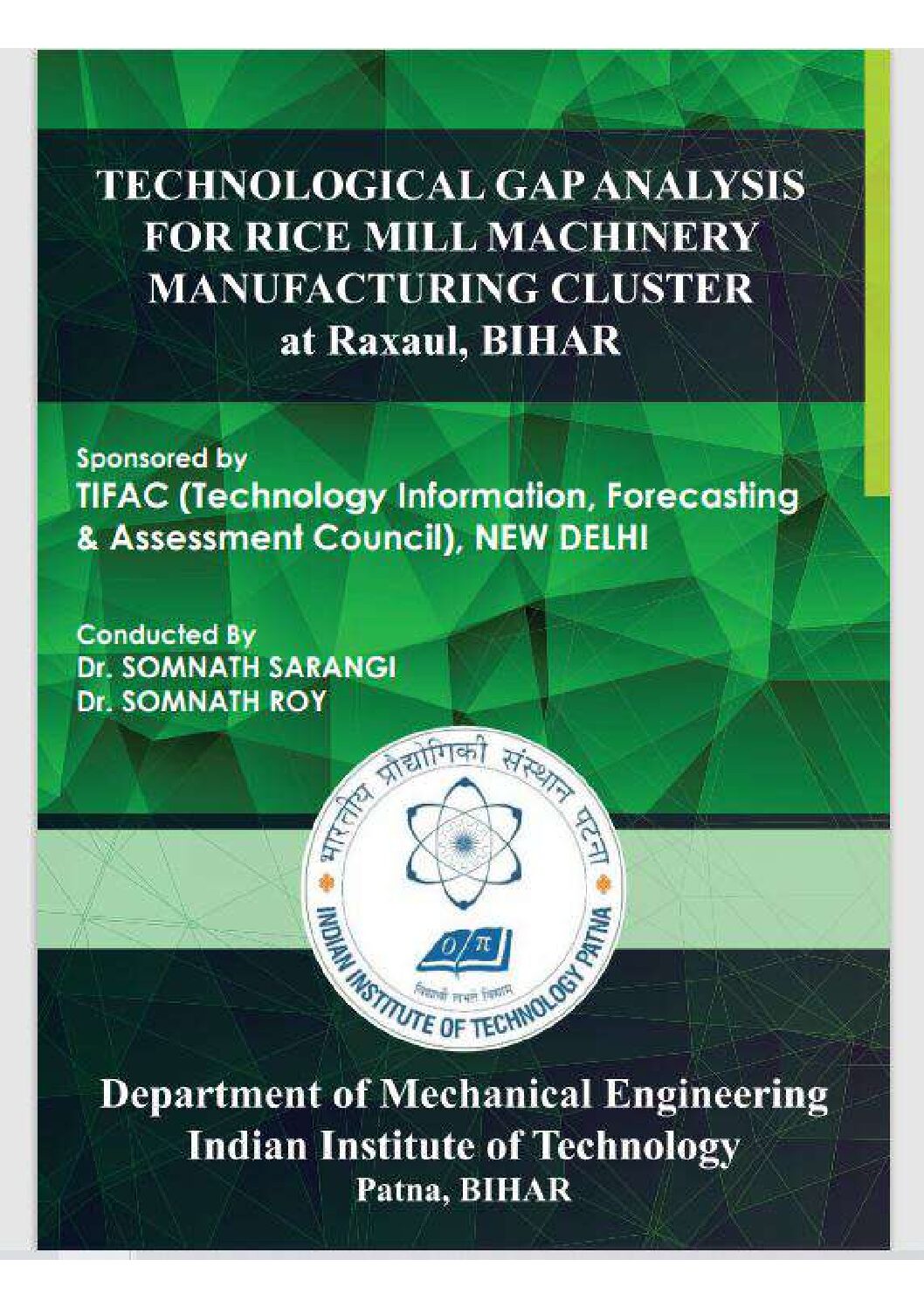Description
Executive Summary
The study aims to understand the nature and extent of technology led economic growth at the district level in the states of Andhra Pradesh and Telangana. Accordingly, the study analyzes the relationship between science and technology (S&T) inputs and economic growth, comprehensively covering the sectors of agriculture, industry and services. The study covers four districts in Andhra Pradesh namely Visakhapatnam, Srikakulam, Guntur, East Godavari, and one district in Telangana namely Adilabad.
The specific objectives of the study are to identify S&T inputs in agriculture, industry and services sectors in the selected districts, develop an index of S&T indicators and examine the relationship between the S&T indices and economic growth of concerned districts. The time chosen for the study is from 2000-01 to 2011-12.
Economic growth has been studied through the Gross District Domestic Product (GDDP) of the respective districts. To assess the technology causes for economic growth, several technology intensive indicators in agriculture, industry and services sectors have been identified and accordingly index of S&T indicators have been constructed for each of the three sectors.
The S&T indicators identified in each of the sectors have been subjected to principal component analysis (PCA), for all the five districts. The factor loadings extracted through underlying commonalities have been used in the construction of the indices. Two S&T indices have been developed in the agricultural sector, labeled as Agri-chemical & Irrigation Index and Agri- livestock Index. PCA in the industry and services sector have given rise to a single index each, labeled as Industry S&T Index and Services S&T Index respectively.
Each of the S&T indices has been subjected to multiple linear regression analysis to understand the extent of the impact of the S&T indices on the GDDP of concerned districts. Based on the partial regression coefficient values the relationship between S&T indices and economic growth has been inferred for each of the districts. Further to the multiple linear regression analysis, the study also employed panel data regression modeling to study the inter-district and sectoral variations of growth and technology causes over the study period.
The findings of the study exhibit that technology intervention in all the three sectors has a greater impact on the growth of the districts. The Services S&T Index has shown maximum impact, followed by Industry S&T Index, Agri-chemical & Irrigation Index and Agri-livestock Index. Analysis of fixed effects and random effects model of the panel data regression also reveals a positive and significant impact of S&T inputs on GDDP of the concerned districts, corroborating the results of the multiple regression analysis. India being a more service driven economy in the recent times, the observations of the study also seems to be in line with the phenomenon.
In summary, the present study has contributed to identification of S&T indicators in three sectors of the economy and the development of sector specific index of S&T indicators for the districts. The study also empirically establishes the contribution of S&T inputs in agriculture, industry and services sector to economic growth at the district level. The study thus sets a new pathway in its approach of constructing the relationship between science and technology and economic growth.






Reviews
There are no reviews yet.